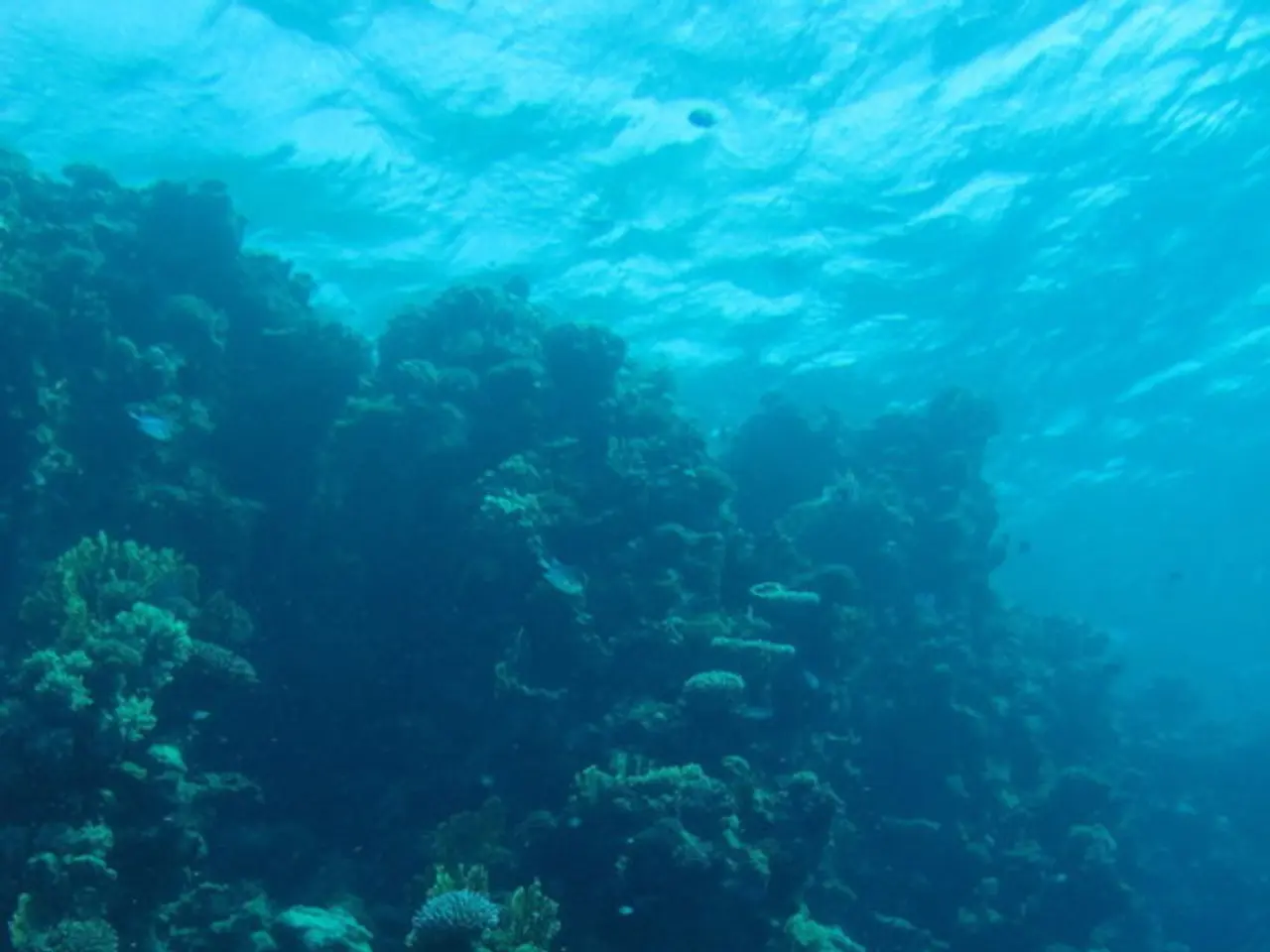Extreme decline of common organisms due to escalating climate crisis
In a recent study, the resilience of two tiny ocean dwellers, Prochlorococcus and Synechococcus, has come under the spotlight as scientists examine their potential responses to climate change.
Prochlorococcus, a single-celled organism with a streamlined genome due to genomic streamlining, could face challenges adapting to rapid warming. This streamlining, while beneficial for survival in cold waters, may limit its ability to cope with the increasing temperatures.
The division rate of Prochlorococcus cells increases up to a water temperature of approximately 28°C. However, as temperatures rise beyond this point, the division rate drops sharply, reaching values typical of conditions far from optimal for Prochlorococcus at 31°C.
According to the RCP8.5 concentration pathway, average sea temperatures could rise by 3.8°C. This increase could push Prochlorococcus out of its preferred temperature range, potentially reducing its occurrence in tropical and subtropical ocean regions.
However, the story doesn't end there. Computer models suggest that another tiny cyanobacterium, Synechococcus, could potentially benefit from climate change. While Prochlorococcus may struggle, Synechococcus might fill at least some of the ecological gap left by its counterpart at higher water temperatures.
The study, however, is not without its limitations. Measurements have so far been limited to spatially restricted marine areas, and less common heat-tolerant variants of Prochlorococcus have not been adequately captured by the method. Moreover, the sampling was limited to surface layers, leaving out what's happening in deeper layers.
Criticisms of the study have also been raised. Bernhard Fuchs of the Max Planck Institute for Marine Microbiology has expressed concerns about the outdated measurement method used in the study.
Despite these challenges, the continued warming of the oceans could have significant implications for marine ecosystems. The reduction in Prochlorococcus occurrence could disrupt these ecosystems and potentially reduce primary productivity in tropical and subtropical ocean regions.
As our understanding of these microscopic organisms and their responses to climate change continues to evolve, it is crucial to monitor their behaviour closely to predict future changes in our ocean ecosystems.
Read also:
- Understanding Hemorrhagic Gastroenteritis: Key Facts
- Stopping Osteoporosis Treatment: Timeline Considerations
- Tobacco industry's suggested changes on a legislative modification are disregarded by health journalists
- Expanded Community Health Involvement by CK Birla Hospitals, Jaipur, Maintained Through Consistent Outreach Programs Across Rajasthan








